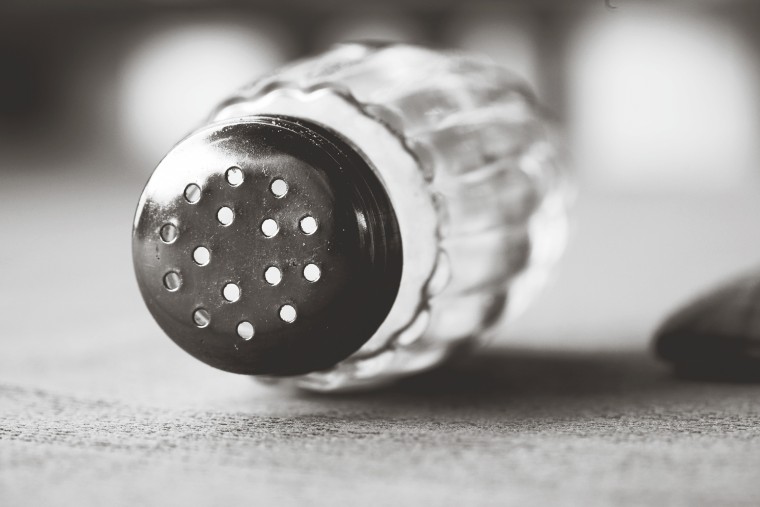The risk of heart attacks, stroke and death can be brought down significantly when people use salt substitutes, which replace some percentage of sodium with potassium, a new study suggests.
An analysis that combined data from 21 clinical trials with a total of nearly 31,949 patients, revealed that the use of salt substitutes could achieve those positive outcomes by bringing down systolic blood pressure by 4.61 mm Hg and diastolic blood pressure by 1.61 mm Hg, according to the report published in Heart.
“The main message from this study is that reducing blood pressure is critically important for preventing cardiovascular events, such as heart attack and stroke, extending life and improving quality of life,” said study coauthor Dr. Darwin Labarthe, a professor of medicine at the Northwestern University Feinberg School of Medicine. “High blood pressure can be reduced by both increasing potassium intake and reducing sodium intake.”
It’s estimated that worldwide about 1.28 billion people have high blood pressure, Labarthe and his colleagues noted. On a population level the declines in blood pressure reported in the study are big improvements. But the average person with hypertension will need to take other measures to get their blood pressure to a healthy level, Labarthe allowed.
For the new study, the researchers scoured the medical literature for studies looking at the impact of salt substitutes on blood pressure and cardiovascular outcomes. An analysis of the data from those studies revealed that use of salt substitutes lowered the risk of death from any cause by 11%, from cardiovascular disease by 13% and the risk of heart attack or stroke by 11%.
The new findings aren’t a surprise, said Samantha Cassetty, a registered dietitian and author of “Sugar Shock: The Hidden Sugar in Your Food and 100+ Smart Swaps to Cut Back.”
“It’s building on some other existing research,” Cassetty said, adding that there are plenty of studies showing people consume too much salt. “About 90% of people exceed guideline targets,” she said.
Sneaky sources of salt
While using a salt substitute can help with the problem, it won’t be enough and so it’s important to turn to other ways to lower sodium and raise potassium, Cassetty said. Since a lot of the salt in Americans’ diets comes from packaged and restaurant foods, it’s important to read labels, since salt is added to almost everything you see on the grocery shelves, and then select products that are low in sodium, she added.
People are often surprised, for example, to hear that bread contains fairly high levels of sodium, because it doesn’t taste salty, Cassetty said. But one slice of bread contains about 150 mg of sodium, so you’d be getting about 13% of the RDA for salt, 2,300 mg, from the two slices of bread in a sandwich.
It’s important to check sodium levels when buying canned foods like beans, and also to rinse the beans off before using them, Cassetty said. “When you’re shopping for frozen vegetables, make sure they are unseasoned, so they contain no sodium,” she counseled.
When it comes to potassium, “our needs are quite high,” Cassetty said, adding that the potassium RDA for adults is 4,700 mg. “You have to have a very carefully planned diet to reach that without supplements, but it’s doable.”
Although most people think of bananas as the best source of potassium, other foods contain more of the critical nutrient, Cassetty said. A potato with the skin contains 838 mg and a cup of cooked lentils contains 731 mg, as compared to the 451 mg in a medium sized banana.
Other ways to cut down on salt
One way to cut back on sodium is to reduce the amount of prepared foods in your diet, said Jessica Levinson, a culinary dietitian. The home cooked meals you replace them with should be made with as little salt as possible, Levinson said, adding that there are ways to make tasty meals with less salt.
While many recipes suggest adding salt in the middle of cooking “I like to add the salt close to the end for most dishes,” Levinson said. Still, some things, like sauces and soups, do come out better with salt added earlier. “When I make a tomato sauce I put in small amount of salt during the cooking process but wait to add more till the end, after I’ve tasted it,” Levinson said.
Levinson also suggests substituting a teaspoon of soy sauce for a teaspoon of salt when you’re cooking. It will still taste salty but you’ll be taking in less sodium, she said. When it comes to cooking veggies, it’s best to roast rather than steaming them, Levinson said. “Setting aside the issue of texture, roasting brings out the sweetness of the vegetables,” she added.
Another strategy: add salt to veggies after they are cooked. “That way the salt is not absorbed, but instead stays on the surface where you can taste it,” Levinson said.
Also, keep in mind that you may have adjusted to higher levels of salt than you need for food to taste good, Cassetty said. “Salt is an acquired taste,” she added. “Most people are used to eating so much salt. Studies show that it takes about three weeks to adjust to less.”

